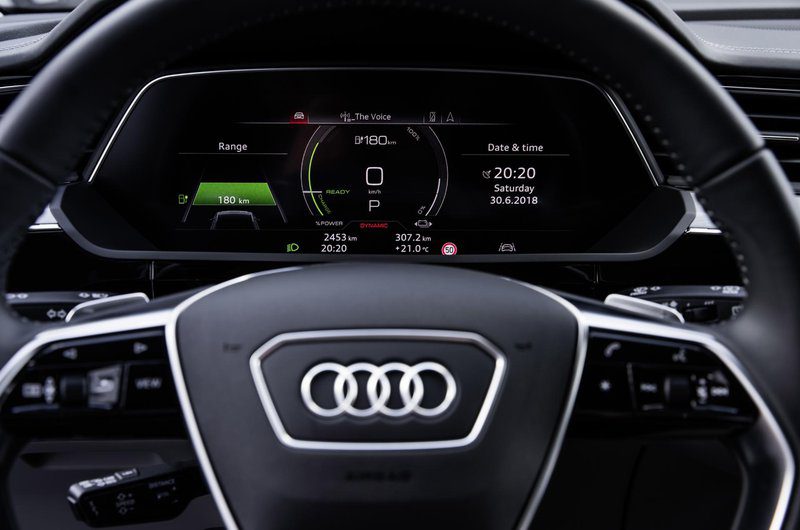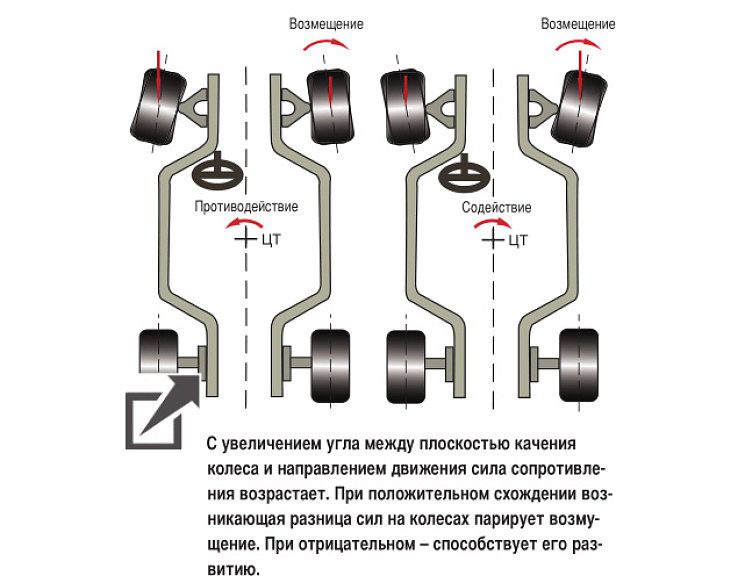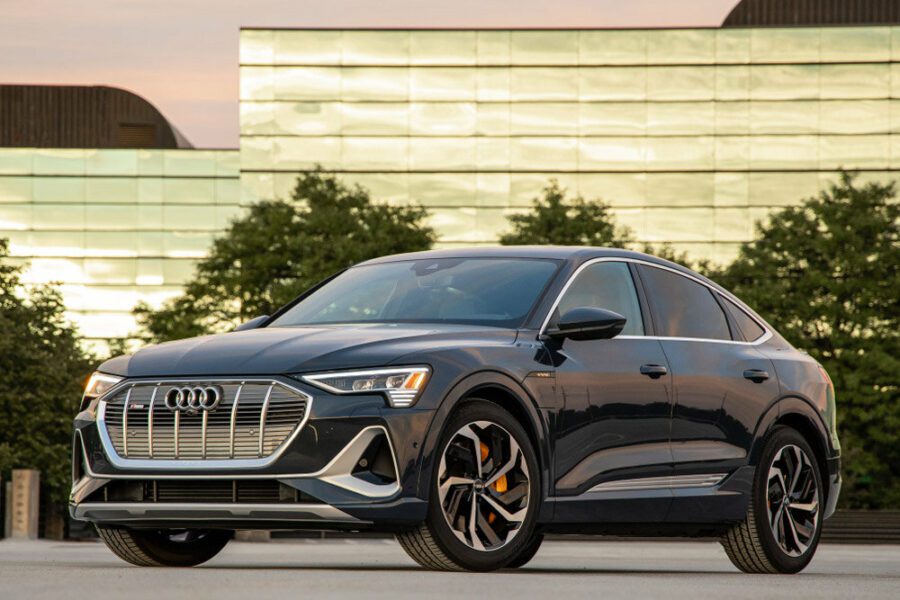
As it should be: introducing the Audi e-thron
Audi has been flirting with electromobility for a long time. Not only with the concepts they have presented in recent years, they have already made several pre-production and small-scale vehicles. Already in 2010, we were driving an Audi R8 e-tron, which later received its (very) limited production version, as well as, for example, a small electric A1 e-tron. But a few more years passed, and Tesla also had to send a real production electric car on the roads of Audi.
It will be on the roads early next year (we were already in the passenger seat behind the wheel), and even earlier, later this year, we will be able to test it behind the wheel - this time more about the technical characteristics. the foundations and history of electromobility at Audi.
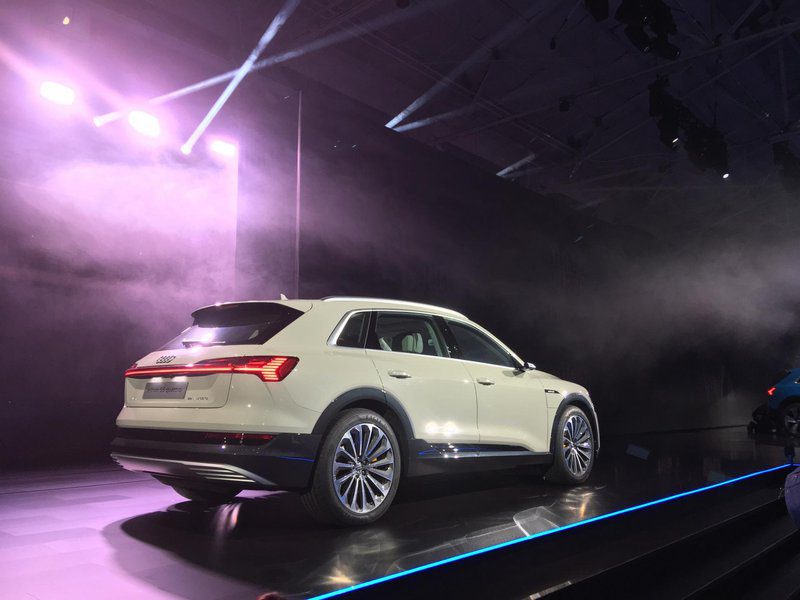
The new electric crossover is 4,901 meters long, 1,935 meters wide and 1,616 meters high and has a wheelbase of 2,928 meters, which puts it on par with the Audi Q7 and just below the new Q8. Of course, comfort, infotainment and assistance systems are also at a high level.
Audi isn't the first to introduce an electric crossover of this size (far ahead of it was the slightly larger Tesla Model X), but as CEO Bram Schot said at the presentation, Audi's "Vorsprung durch technik" (tech advantage) slogan doesn't mean you're the first. in the market, but when you come to the market, you are also the best. And, at least, judging by what they have seen and heard so far, they have completely succeeded.
Since Audi's aerodynamics have gone to great lengths (so the car has active dampers on the cooling system air intakes, air suspension that changes the distance to a completely flat surface and, like golf balls, holes with a solid bottom from the ground at the speed of, say, instead of a video camera outside mirrors). with OLED screens in the doors), the engineers managed to reduce the drag coefficient to 0,28. The airflow through the rims with 19/255 55-inch tires with very low rolling resistance has also been optimized. An aluminum plate underneath the vehicle, which is also designed to protect the drivetrain and high-voltage battery, helps improve airflow.
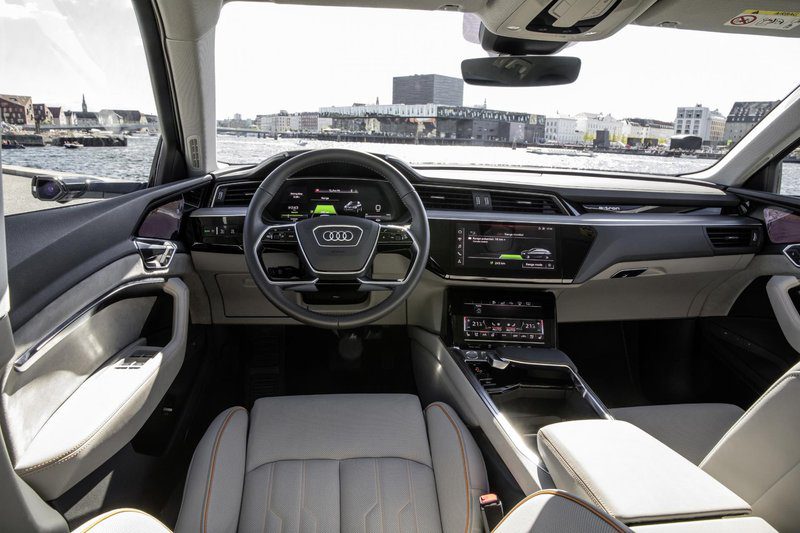
It is installed under the passenger compartment, but has a capacity of 95 kilowatt-hours, which, among all other measures (including the e-tron in winter, heats the passenger compartment mainly with the heat generated by the electronics and the propulsion system, which for about three kilowatts) is sufficient for a range of more 400 kilometers on the WLTP cycle. Basic slow charging in a home grid or public charging station takes place at a maximum power of 11 kilowatts, as additional charging they will offer stronger AC charging. With 22 kilowatts of power, the e-tron charges in less than five hours. The fast charging stations will charge up to 150 kilowatts, which means that the Audi e-tron will charge in about half an hour from a discharged battery to 80 percent of its maximum capacity. Owners will also be able to use the app on their smartphone to locate charging stations (as well as driving, route planning, etc.), and charging connectors are found on both sides of the vehicle. In order to expand the network of fast charging stations (up to 150 kilowatts) throughout Europe as soon as possible, a consortium of car manufacturers, including Audi, has created Ionity, which will soon build about 400 such stations along European highways. However, in two years, in the coming years, their number will not only increase, but will also move to 350 kilowatt charging stations, which will actually become the fast charging standard in Europe in the future. This standard will charge approximately 400 kilometers of driving in half an hour, which is comparable to the time we now spend stopping on longer routes. German studies show that on long journeys, drivers stop every 400-500 kilometers, and the duration of the stop is 20-30 minutes.

The battery is powered by two water-cooled asynchronous electric motors - one for each axle, for a front power of 125 and a rear of 140 kilowatts, which together develop 265 kilowatts and 561 Newton meters of torque (the difference between the two nodes is only in the length of the winding of the electric motor and the software control electronics). If the driver lacks a 6,6-second acceleration to 100 kilometers per hour, he can use the "acceleration mode", which increases the power of the front electric motor by 10 and the rear by 15 kilowatts, for a total of 300 kilowatts and 660 newtons. meters of torque, which is enough for the Audi e-tron to accelerate to 5,7 kilometers per hour in 100 seconds and not stop at around 200 kilometers per hour. Water-cooled motors have both stator and rotor cooling, as well as cooled bearings and control electronics. In this way, Audi has avoided the loss of power due to heating, which is otherwise typical for electric motors of this type (and has taken care again, for example, of heating the cab on colder days).
Also, a lot of work has been devoted to the regeneration system, which also allows you to drive only with the accelerator pedal. It is adjustable in three stages (using levers on the steering wheel) and can regenerate with a maximum output of 220 kilowatts. Regenerative braking, they say in Audi, is enough for 90 percent of road situations, and the e-tron can only brake with regeneration with a deceleration of up to 0,3 G, then the classic friction brakes already begin to help.
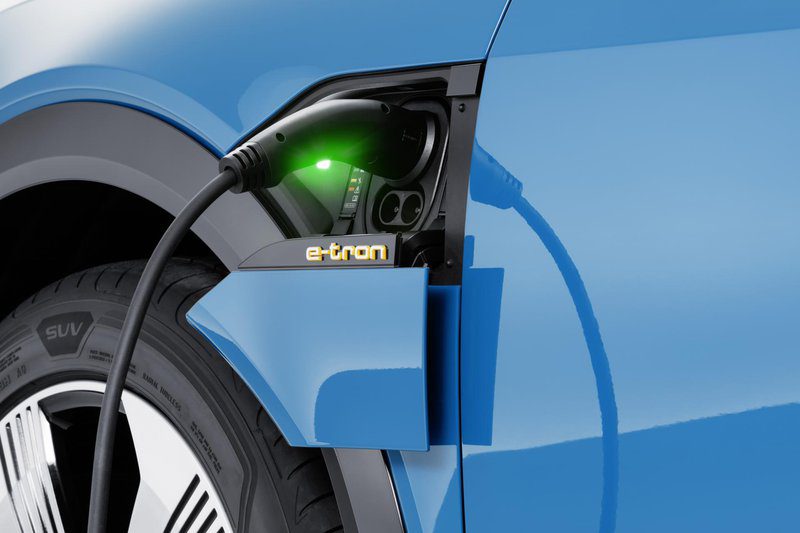
The Audi e-Tron battery consists of 36 modules with 12 lithium-ion cell packs, together with a liquid cooling (and heating) system, an extremely robust housing and an intermediate structure designed to protect the cells in the event of a collision, and electronics. weighs 699 kilograms. The whole package is 228 long, 163 wide and 34 centimeters high (at the top of the battery under the cab, a good 10 centimeters thick, higher only under the rear seats and in the front, where the electronics are installed), and attached to the underside of the car. 35 points. Each module is coated with thermal grease at the point of contact with the cooling part, and the liquid cooling part also has a special valve that releases liquid from the battery in the event of a collision so as not to come into contact with any damaged elements. To better protect you, not only is the body extremely strong, but also the longitudinal and lateral links between them, which redirect the collision force away from the cells.
Audi has already started production of the e-throne at its zero-carbon plant in Brussels (currently producing 200 e-thrones a day, 400 of which come from Audi's Hungary plant) and will hit the roads of Germany at the end of the year. it is expected to be deducted from approximately € 80.000 360. The prices in the US are already pretty clear: there will be a Premium Plus version, which already has leather, heated and cooled seats, navigation, 74.800-degree camera, matrix LED headlights, B&O audio system and a bunch of other equipment. costs $ 10 (excluding subsidies). At the same time, the Audi e-tron with a wider range and much richer equipment is almost XNUMX thousandth cheaper than the Tesla Model X (not to mention the quality of workmanship). In terms of price, size, performance and range, it also has a significant lead over the Mercedes EQ C unveiled two weeks earlier, but it's true that Mercedes has rightly received so much criticism for the range that it's still known to begin with. sales. what a bold change.
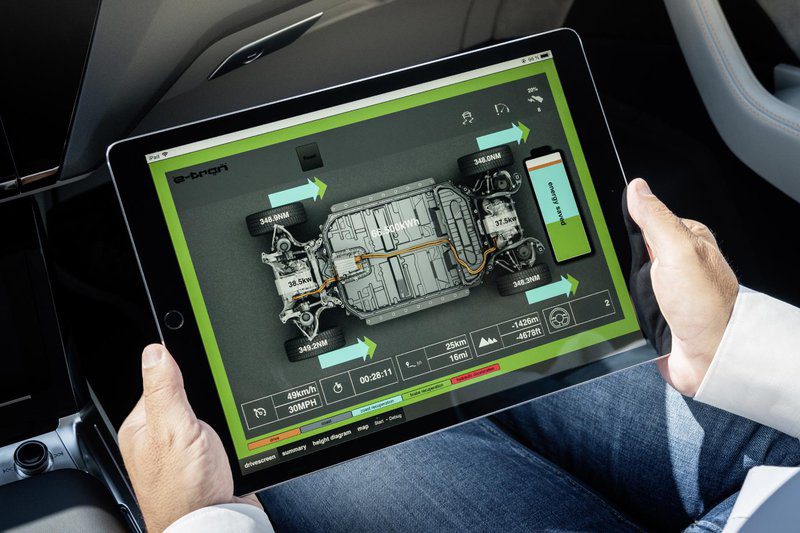
For those customers who have already booked the e-tron, Audi has also prepared a special start-up series of 2.600 Audi e-tron edition one in Antigua blue with a wide range of accessories.
Audi's electric vehicle production will expand rapidly, with a more compact e-tron sports car coming next year, and a four-door sports coupe (which will share technology with the Porsche Taycan) and a smaller compact electric model in 2020. By 2025, only seven Q-SUVs will be available with all-electric drive, with five more electrified.
From the front passenger seat
How quickly time flies! When Walter Röhrl crashed into 1987 1-foot Pikes Peak in Colorado in his Audi Sport quattro S47,85 in 4.302 in ten minutes 7 seconds, the rally expert from Regensburg could not have imagined that the legendary mountain race would one day become a playground. electric mobility. This year, Romain Dumas in his VW ID R electric car, with a time of 57: 148: 20 minutes, broke all previous records on the exact XNUMX-kilometer route. Audi probably thought that what goes uphill should also be successfully launched from it, and they chose a new pilgrimage center for electric mobility to test drive the Audi e-tron and invited us to the right place.
First impression: when descending from Pikes Peak, the regeneration works perfectly. If the driver fully accepts the concept of driving an electric vehicle and drives predictably, he can basically cope with braking conditions in which a force of up to 0,3 G is sufficient and a fully accelerated accelerator pedal is sufficient. However, if stronger deceleration or more aggressive braking is required, classic hydraulic brakes also interfere. “We solved this problem with the brake pedal – just like in classic cars,” explained technician Victor Anderberg.

The interaction of the brake systems of the old and the new world is also important at speeds below ten kilometers per hour. This is when the electrical regeneration more or less works and leaves the work to the hydraulic brakes. This so-called blending (i.e., the most subtle transition from electric braking to friction braking) should be as gentle as possible – and you actually only feel a slight jolt just before stopping. As a result, driving with active cruise control, which is fully restored to a standstill, is significantly more relaxed.
When driving, the systems work great together. In addition, the power of 265 kilowatts in normal mode and 300 kilowatts (408 "horsepower") in Boost mode is enough for passengers to feel a noticeable push in the back during acceleration. After six seconds, you reach top speed on a country road, and at 200 kilometers per hour, the electronics stop accelerating. By comparison, the Jaguar I-Pace could be ten kilometers faster. As soon as the e-tron goes through corners faster, you also feel the weight in the front passenger seat being squeezed outward. In any case, four-wheel drive, tuned to deliver as much torque as possible to the rear wheels, tries to hide the increased weight of the vehicle (through torque vectoring and selective brake use), and in poor conditions. on the road, it is also assisted by the air suspension.
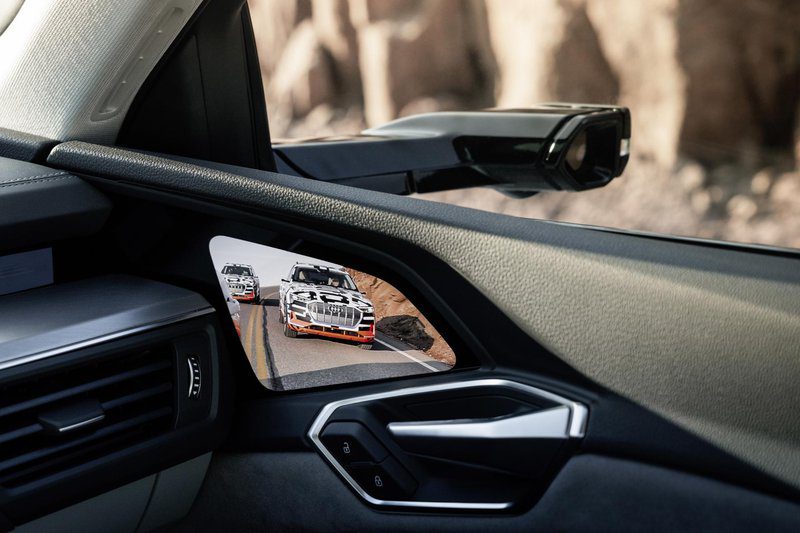
If you drive straight ahead, the electronics reduce traction on the front axle to save energy. At the same time, the driver cannot intervene in the distribution of power and manually adjust the drive to all rear or front wheels. “This car works most efficiently if the front axle always helps the movement a little,” Viktor Anderberg explains. Let's take a look at the energy balance of our short trip: on a 31-kilometer descent with a vertical drop of 1.900 meters, the Audi e-tron increased its range by more than 100 kilometers.
Wolfgang Gomol (press-inform)
